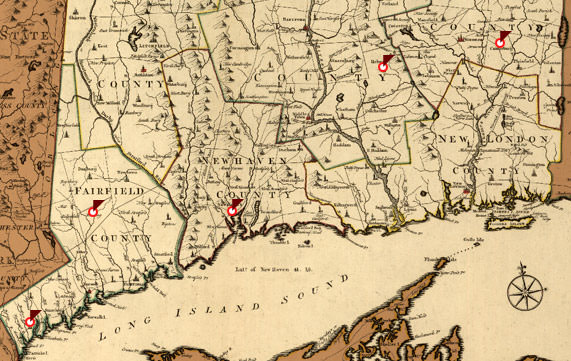Citizens ALL: Introduction to Connecticut Stories

The five locations on this map are sites of local history which reflect the changing status of African-American citizenship in Connecticut during the eighteenth and nineteenth centuries.
CANTERBURY: The struggle for civil rights has often focused on equal access to education. A visit to Canterbury and the school of Prudence Crandall reveals what happened when a handful of women, white and black, attempted to establish their own learning community in rural Connecticut of the 1830s. Go to module 4, The Right to Education in the Struggle for Citizenship
HEBRON: In the early years of our nation, the townspeople of Hebron confronted the ironies of a nation founded on the idea of freedom but built on the institution of slavery. The story of Cesar and Lowis raises questions about what defines a neighbor and a citizen, despite what the law might say. Go to module 2, Slavery & Freedom in the Era of the American Revolution
NEW HAVEN: African Americans in the early nineteenth century found the state’s larger cities to be a source of both opportunity and daily insults. The success of free black entrepreneurs like William Lanson of New Haven was countered by institutional racism that restricted full citizenship to white landowners. Go to module 3, The Attack on Black Citizenship in Connecticut
REDDING: A neglected cemetery by the side of a road inspired a Connecticut student to uncover a rich and unexpected history of African Americans in her community. Learn about her research project, and get some tips for exploring your own local town history. Go to module 5, Finding Your Local Town History
GREENWICH: The more prosperous households and farms of colonial Connecticut, like that of David Bush in Greenwich, often relied upon enslaved labor. A visit to the slave quarters at the Bush-Holley Historic Site provides a tangible sense of the reality of slavery in New England. Go to module 1, Enslaved Africans in the Colony of Connecticut
